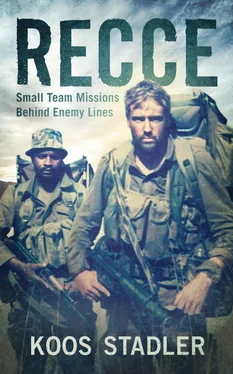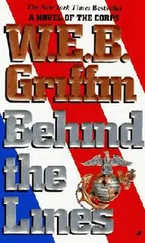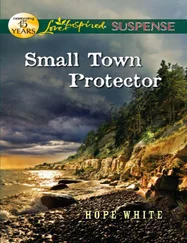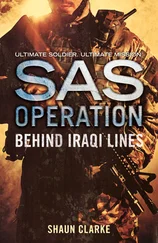This was illustrated clearly by an incident when Sector 20 at Rundu requested a team to do a recce of a FAPLA [6] FAPLA, or People’s Armed Forces for the Liberation of Angola, originally the armed wing of the MPLA, was the Angolan regular army.
brigade HQ at Mpupa in southeastern Angola. It was to be a clandestine mission, and the aim was to locate the base and do a detailed close-in recce, with the eventual purpose of passing the information on to UNITA for a large-scale base attack. However, this information was never disclosed to us, probably because the planners thought we would be a security risk.
I picked an eight-man team, four whites and four Bushmen, to rehearse for the job, as I thought that such a large target would require more feet on the ground. The intention was to leave a two-man element outside the base, and let three two-man teams cover the three main target areas within the base. We were also told that, as the South Africans were not officially operating in the area and were supposedly not supporting UNITA at the time, the operation could not be compromised at any cost, hence the use of helicopters for insertion or extraction would not even be considered. All equipment needed to be non-traceable, and no sign whatsoever could be left to suggest that South Africans had been in the area.
This was the last point-target reconnaissance I would ever do with a recce team bigger than three. The operation almost turned into a major disaster, and was in many respects a turning point for me, mainly because of the lessons we learned from our mistakes.
We started rehearsing weeks ahead. We sat for hours in the ops room at Rundu studying aerial photographs of the base and surrounding areas. We spent many hours determining routes in and out, identifying hiding places and working out emergency procedures. The base, which consisted of an HQ and three large defensive systems occupied by two battalions, served as the main headquarters and forward airfield for FAPLA forces in the area. Guided by the intelligence officer from Chief of Staff Intelligence (CSI) dedicated to the deployment, we identified complex trench systems surrounding the base and worked out a tricky approach route through them.
As usual, we spent many hours on detailed rehearsals, practising every drill, every possible method of stealthy movement and various immediate-action drills in case things went wrong. By the time we deployed, we were confident that our plan would work. What we did not realise beforehand was that the vegetation surrounding the target was not dense enough to hide a team of eight, and the soft sand of the Angolan savanna would make effective anti-tracking almost impossible.
We infiltrated for five days, taking it slowly in order to leave no tracks and to ensure that we reached our target unobserved. A slight navigational error over a 40-km distance, with no landmarks to plot your position, could lead to disaster. At the time I had not fully mastered the art of multi-legged dead reckoning (DR) navigation, whereby the navigator, in the absence of recognisable terrain features, has to rely completely on maintaining his bearing and judging his distance. I realised too late that navigation should be planned in the same detail as the rest of the deployment.
On the night we finally had to penetrate, I came to the shocking realisation that we were about three kilometres south of the target, and were about to penetrate one of the forward early-warning posts, located in a deserted farmhouse. During the last three days of the infiltration we had rainy, overcast weather and absolutely no way of identifying a landmark to guide us.
We had to admit defeat and return to Rundu to work out a better route to the target. When we deployed again, we approached the target within four days. Using DR, I navigated to the last step, and found the target with relative ease. On the morning of the fourth day, the team was huddled together in a thicket that did not provide enough cover at all – and barely two kilometres from the target. To make matters worse, the hiding place was right next to a well-used pathway, frequented by both soldiers and civilians. We kept a low profile, sweating out the day.
By early evening we were up and about, relieved that we had not been seen and ready to penetrate the base. I established comms to brief the Tac HQ on our intentions, and then the team fell into formation and started the approach to the target area.
On the perimeter we left a two-man team with a radio, Tinus “Putty” van der Merwe and his buddy, to establish the crash RV (the point that would serve as rendezvous in case of emergency) and to guard the kit, while the three recce teams entered the dragon. The six of us stalked between two trench systems, where we could hear soldiers on both sides going about their business, and then made our way towards the centre of the target area. Once on the runway inside the base, we split up, one team going north, one south and my team, the indomitable Chimango Kanyeti and a somewhat self-assured me, moving eastward in the direction of the river.
For the first time in my operational career I had a peculiar experience that would often repeat itself later, but at the time was unique and quite inspiring. As we stalked towards our target, following the route I had painstakingly planned, experiencing the terrain and features as we had seen on the aerial photos, I had the distinct feeling that I had been there before. I experienced an eerie and very real sense of déjà vu. Because we knew every centimetre of the terrain, and because Chimango and I had rehearsed in similar conditions, we both had the feeling that we had done this before, on this exact stretch of earth!
Then I made the dumbest mistake of all. As we moved east, we also approached against the low moon. It was 02:00 and the quarter moon was rising above the treetops, providing just enough light to restrict our vision and cast dark shadows under the cluster of trees we were approaching – the exact position where we expected the enemy to be.
There is no sound as ominous as the cocking of an unfriendly AK-47 in the middle of the night – especially if you are at the wrong end, exposed and not sure where it’s coming from. We were suddenly challenged from the shadows of the line of trees ahead of us. The first to gather his wits was Chimango. As the voice behind the AK-47 demanded to know who we were, Chimango answered in the local vernacular, which, fortunately, he understood. Pretending to be drunk, he mumbled something to the effect that we were on our way to our platoon. That gave us the split-second advantage we needed.
We did not wait for the man behind the voice to make up his mind as to whether we were friendly or not, but just gapped it out of there. This would not be the last time the cocking of an AK-47 in the dead of night would bring an operation to an abrupt end. And I can honestly say that I never grew to like that sound particularly.
Our next challenge was to get the teams together, because by that time we had run out of comms with them. At last we managed to raise the other two teams, one to the north and the other to the south, on the radio and call them back to the crash RV. By that time there was enough commotion around us to wake a sleeping dragon, so no one felt the need to hang around. We moved out along the same route by which we had entered, carefully avoiding the defensive positions where we could now hear the sounds of soldiers awakening and preparing for the day. On the outskirts of the base we met up with Putty, who was still manning the crash RV and guarding our kit.
There was barely an hour of darkness left, and we made good use of it. We ran west, away from the base, and then, in an attempt to deceive the enemy, turned north and started applying various anti-tracking techniques. Eventually we swung west, then turned south, thinning out, changing direction, walking backwards in our tracks and generally behaving frantically. By 09:00 we realised that the FAPLA guys had launched a massive follow-up. Behind us we could hear vehicles closing in, distinctly pushing over vegetation and revving up through the brush. Vehicles were also advancing on the road to our west, probably dropping off teams to cut in on our tracks. To the east, we were cut off by the Cuito River. To the south lay the Cubango (Kavango) River – still to be crossed once we got there.
Читать дальше












